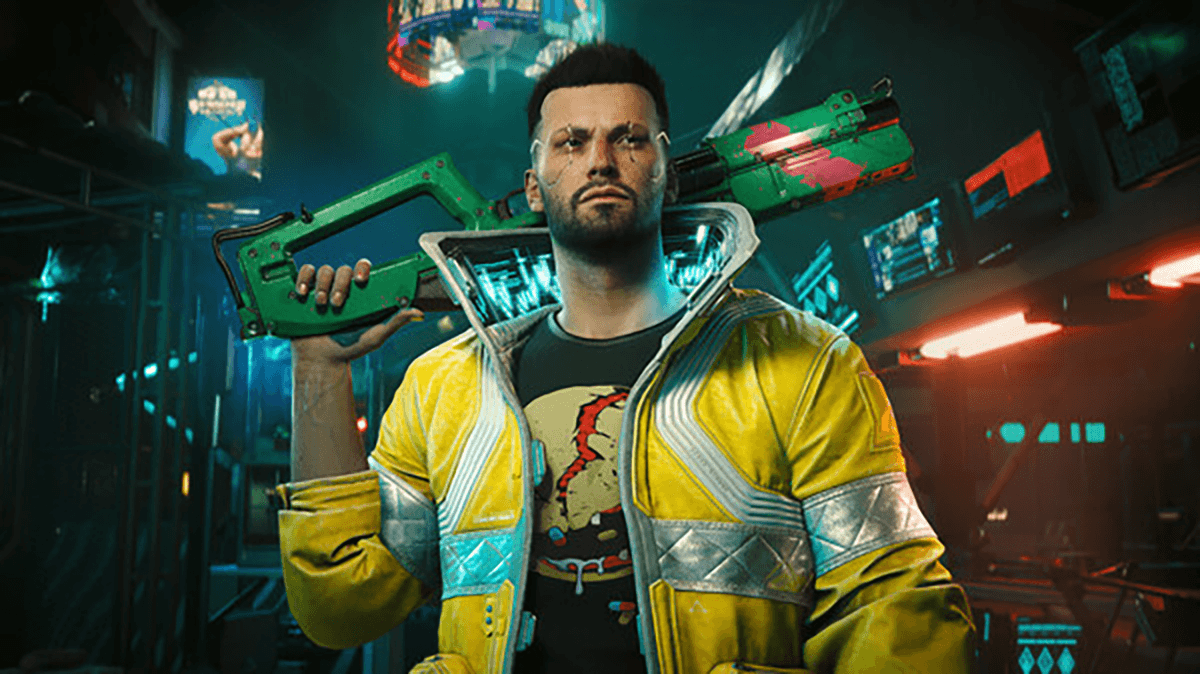Starfield: Why is it So Hyped?
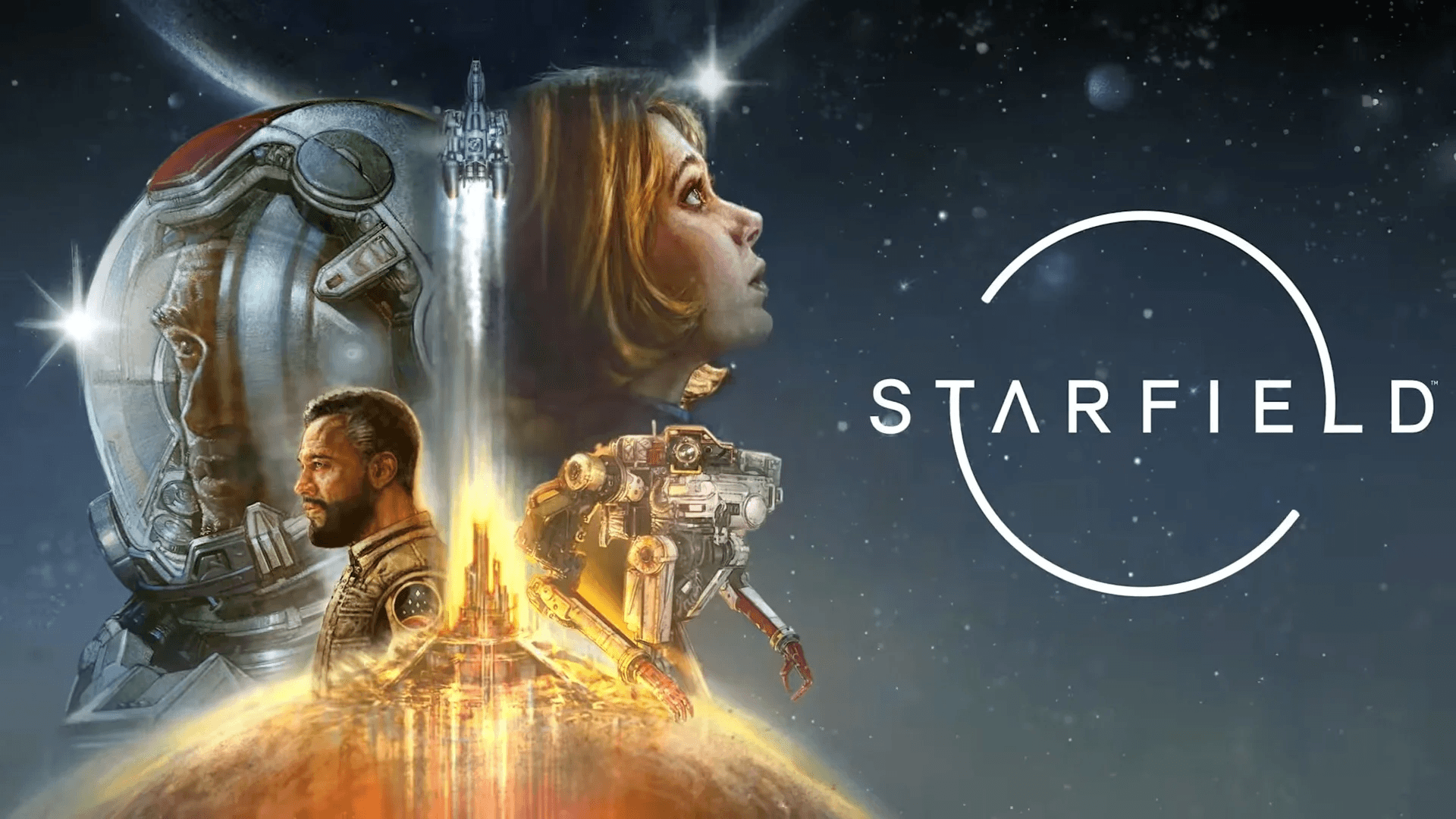

Release Date6 September 2023DeveloperBethesda Game StudiosPlatformXbox Series X|S, PC, SteamIGN Rating7/10Steam Rating7/10
The final frontier: space. Humanity’s obsession with the vast expanse of the universe is nothing new. From early stargazing to the modern space race, our infatuation with what lies beyond our blue planet is undeniable. And, as with all major human interests, our cosmic curiosity has found its way into the world of gaming. Space-themed games have blossomed over the last decade. Offering players a chance to embark on interstellar adventures without ever leaving their couch. Today, we delve into Starfield, a title that is being heralded as the next monumental step in space gaming.
Historical Context of Starfield
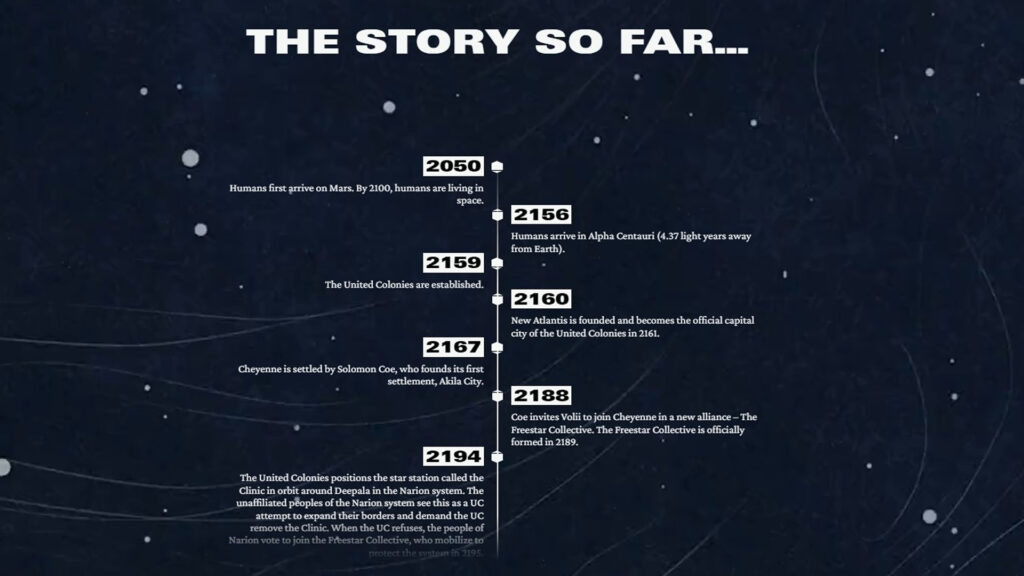
The enthralling allure of space-themed video games has deep roots that span decades. From the earliest days of gaming, there has been a magnetism towards titles that allowed us to venture beyond our terrestrial confines.
This genre capitalizes on humanity’s age-old fascination with the cosmos, tapping into our innate desire to explore uncharted territories. To unravel the enigmatic fabric of the universe, and to constantly push the boundaries of our imagination.
The rudimentary games from the past transported us on pixelated adventures across rudimentary representations of star systems. These often-simple graphics were the seeds of something grander. As technological capabilities expanded exponentially, so did the intricacy, depth, and realism with which these galactic odysseys were portrayed.
Consider the revolutionary design of “No Man’s Sky.” It broke barriers by granting gamers access to an almost boundless universe teeming with procedurally generated planets, each uniquely detailed.
Meanwhile, “Elite Dangerous” didn’t just offer a galaxy, it meticulously mirrored our own Milky Way. Which presents gamers with a breathtaking simulation that is nothing short of awe-inspiring.
Then there’s the tour de force that is “Star Citizen.” Which is an ambitious venture born from crowdfunding, aimed at delivering an unparalleled cosmic adventure. It’s these pioneering titles, and many others like them, that paved the celestial pathway for the upcoming behemoth: Starfield.
What is Starfield?
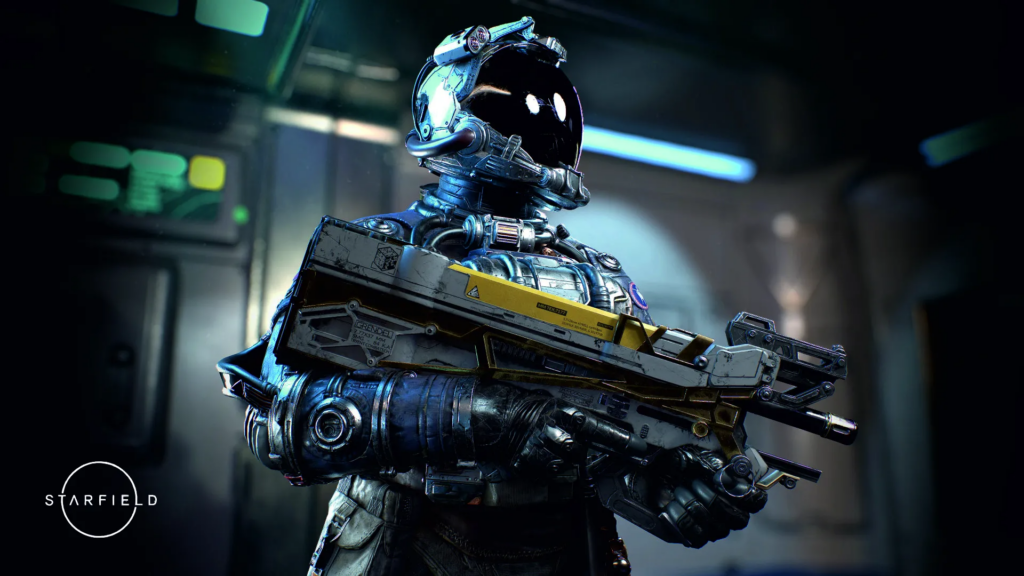
For the uninitiated, or those who haven’t been closely tracking the evolutions in the gaming universe. Starfield might sound like just another entrant in the vast cosmos of space-themed video games.
However, that couldn’t be farther from the truth. Starfield is a masterful creation from the renowned Bethesda Game Studios. The same luminary developers who gifted the gaming community with masterpieces like “The Elder Scrolls” series, a realm of high fantasy and intricate lore. Also, the haunting, post-apocalyptic landscapes of “Fallout.”
Bethesda, over the years, has not only established itself as a powerhouse in game development but has also built an impeccable reputation for weaving expansive narratives, constructing intricate, breathtaking worlds, and ensuring a depth of immersion that’s rare to find.
These aren’t just games; they are experiences, grand odysseys that remain etched in players’ memories for years. And with Starfield, the studio is reaching for the stars—literally.
The game aims to elevate the standards of space exploration titles. Offering players a universe that promises the same level of detail, complexity, and immersive gameplay that have become synonymous with Bethesda’s name. Prepare to embark on a journey where the vastness of space meets the intricacy of storytelling.
Gameplay Mechanics
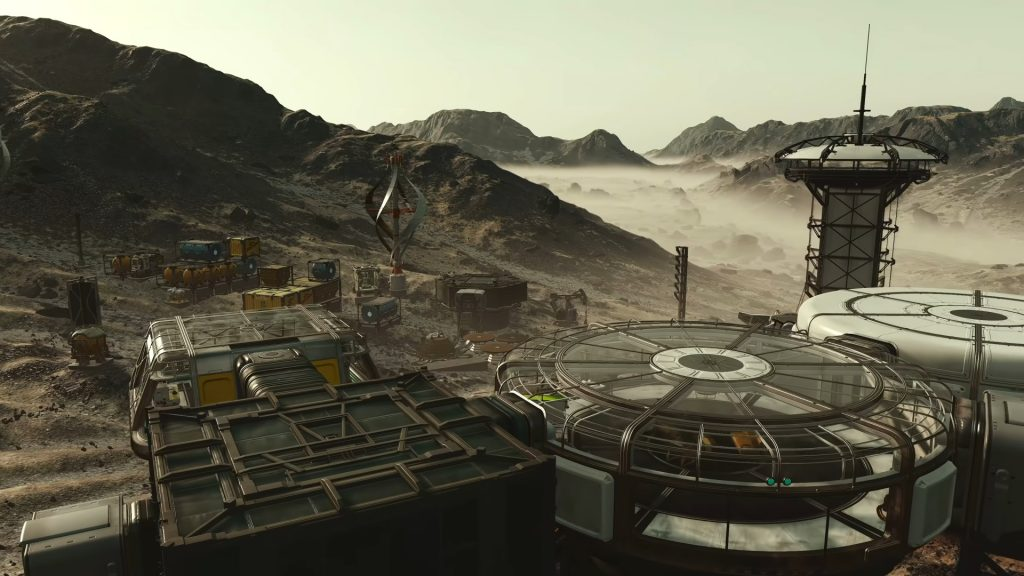
The heart and soul of any video game lie intricately woven within its gameplay mechanics. After all, what’s the allure of an expansive cosmos if it serves merely as an ornate backdrop without substance or depth? It’s like having a vast stage with no performance. Bethesda, with its history of creating engrossing worlds, understands this sentiment profoundly.
Central to Starfield’s experience is the art of exploration. As players, you’re not merely floating aimlessly in space; you’re embarking on a purposeful voyage. Each journey takes you across boundless stretches of the cosmos. Inviting you to set foot on previously undiscovered celestial entities, delve deep into the mysteries they hold, and perhaps even challenge pre-existing notions of space and time. Here, space isn’t a mere setting; it’s a living, breathing entity, pulsating with its unique rhythm, whims, perils, and marvels.
Diving deeper, Bethesda’s hallmark feature, character customization, promises a front-row seat in Starfield. Known for their intricate character-building mechanisms, the game will undoubtedly offer a plethora of options. Players will be allowed to fine-tune every aspect of their spacefaring avatar. This isn’t merely about aesthetics. Every decision, every modification, molds the narrative, ensuring that no two journeys are identical.
Further amplifying the player experience is the building and crafting mechanism. While specifics are shrouded in mystery, glimpses and whispers suggest an intricate system. Imagine modifying interstellar vessels to your liking and constructing bases on far-off planets. Or engaging in trade—possibly even diplomacy—with extraterrestrial civilizations. Each mechanic intricately knits into the fabric of the game, reinforcing the idea that players are not mere spectators. In the grand tale of Starfield, they are the protagonists, scripting their own odyssey.
The Story & Universe
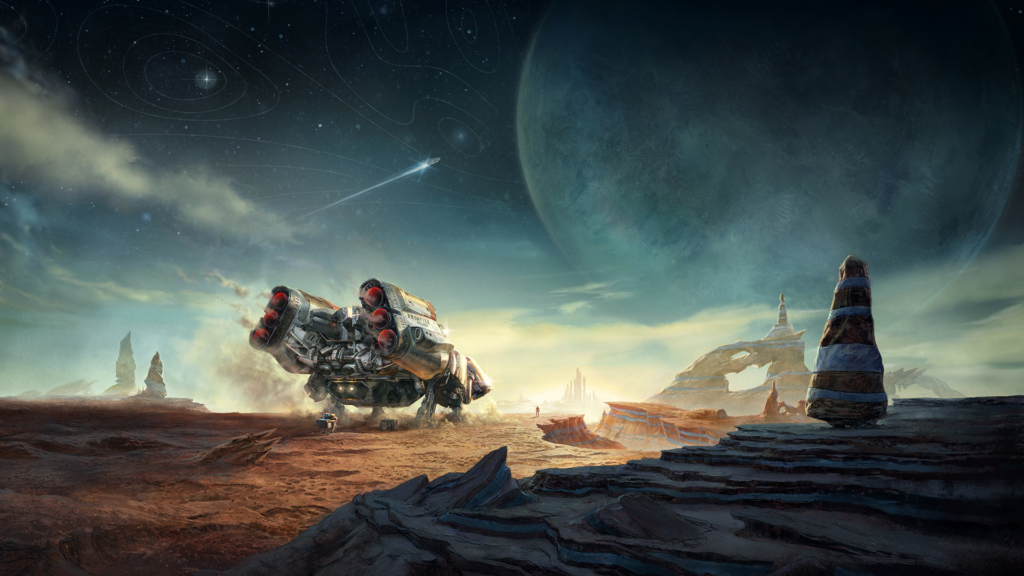
While the mechanics of a game lay the foundation, it’s the narrative and the universe that imbue it with life and soul, allowing it to truly transcend ordinary boundaries. Bethesda, with its illustrious history, has consistently demonstrated an unparalleled prowess in storytelling.
Their titles are celebrated not just for their intricate gameplay but for the mesmerizing tapestries of storylines, brimming with lore that could rival ancient epics. Starfield is poised to uphold and perhaps even elevate this storied tradition.
This game isn’t merely an exercise in hopping between planets or wandering aimlessly in the void. Starfield promises an odyssey and a compelling narrative that weaves tales of ancient factions. Along with, lost civilizations, and poignant stories of individuals—heroes, villains, and everyone in between.
The preliminary glimpses suggest a universe teetering on the precipice of some monumental change. A cosmos where equilibrium has been lost. Players are not just passive observers; they find themselves thrust into pivotal roles. Potentially holding the power to either salvage a universe on the brink or push it into the abyss.
Bethesda’s commitment to world-building in Starfield is staggering. Rumors suggest countless hours, spanning years, dedicated solely to fleshing out the game’s lore.
This ensures that players aren’t merely exploring vast stretches of space but are journeying through a cosmos steeped in history, myths, and legends. Every star, every planet, every nebula has a tale to tell, waiting for the curious traveler to unravel.
Graphics, Sound, and Immersion
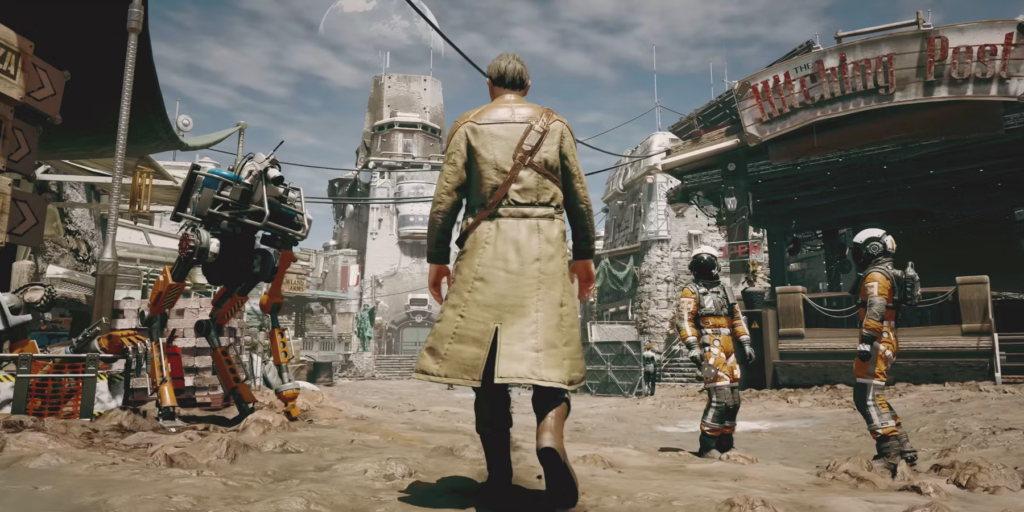
In today’s era of state-of-the-art gaming technology, the expectations for visual and auditory experiences are sky-high, and Starfield, armed with the prowess of contemporary hardware, is primed to meet and perhaps even exceed those expectations.
The snippets of graphics we’ve been privy to are nothing short of a visual symphony. Whether it’s the ethereal glow of nebulae, the fiery dance of supernovas, or the mystifying abyss of black holes, each celestial element is depicted with an unparalleled finesse and meticulous attention to detail.
However, where Starfield truly aims to captivate is in its auditory landscape. Imagine the haunting vastness of space—a profound silence only occasionally interrupted. There’s the gentle purr of your spacecraft’s engine, the distant, almost ghostly reverberations from cosmic phenomena, and the crescendo of atmospheric disturbances as you make your descent onto unknown worlds.
Such sonic nuances weave a tapestry of sounds that cocoon players, offering an immersion that’s as close to real space travel as one can get from the comfort of their couch.
But the immersion doesn’t stop there. Starfield’s embrace of realistic space physics adds another layer of depth. Players aren’t merely gliding through the stars; they’re faced with the challenges of true navigation, the intricacies of fuel management, and the disorienting dance of zero gravity.
Every minutiae, every facet of the game, is painstakingly curated to ensure that when players venture into Starfield’s universe, they don’t just play; they live the life of an interstellar explorer.
Anticipation & Community Reception
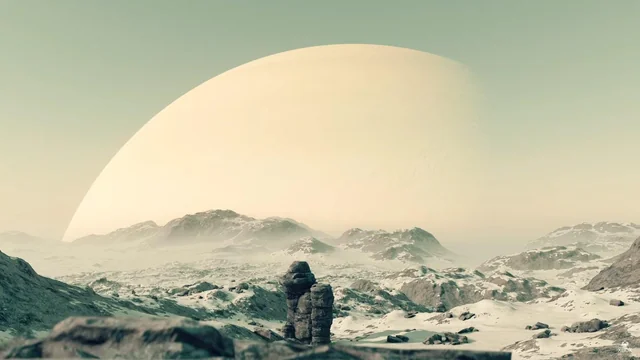
It’s not just the players who are on the edge of their seats. The critic community, often the harshest judges, is observing with keen interest.
Many seasoned reviewers, who have witnessed the ebb and flow of gaming trends, posit that Starfield might not just be another blockbuster, but a seminal title that could redefine the very paradigms of space-themed games.
Adding to the mounting excitement is the recognition Starfield has already garnered. Even before its official launch, its innovative approach and captivating teasers have ensured it a place on the podium at prestigious gaming events.
And if the early buzz is anything to go by, this is merely the prelude. Once the game graces our screens, it’s poised to sweep awards and etch its name in the annals of gaming history.
The fervor within the gaming community surrounding Starfield is palpable, reminiscent of the pulsating energy before a major cosmic event.
From the moment the first glimpses were shared, digital spaces—be it forums, Twitter threads, or YouTube comments—have been flooded with eager fans dissecting every frame, postulating theories, and sharing their unbridled enthusiasm. Every teaser, every snippet from developer diaries, has become a catalyst for fervent discussions and fiery debates.
Comparison with Other Space Games
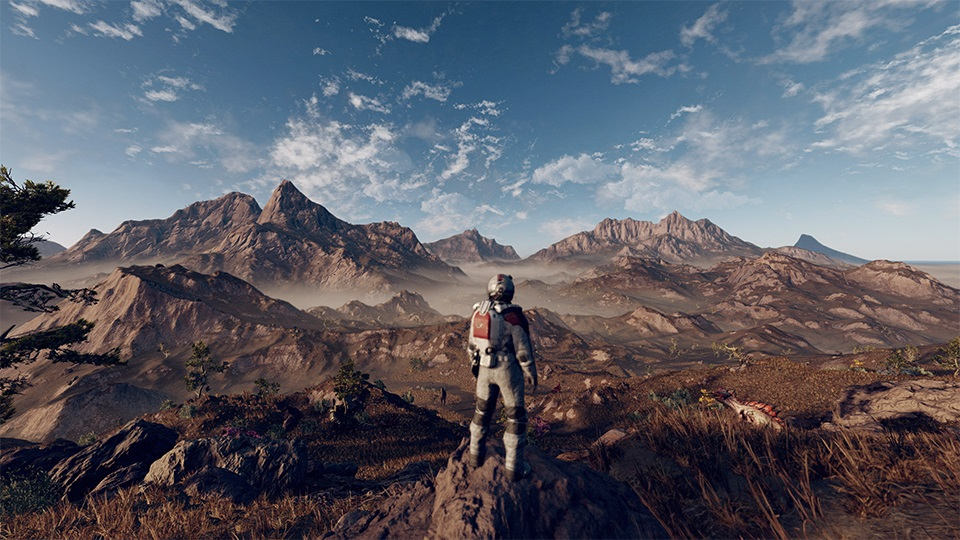
In the vast landscape of space-themed video games, where titles often get lost in the constellation of offerings, Starfield aims to shine like a supernova.
Naturally, as with any game stepping into an established genre, comparisons are not just expected; they’re par for the course. However, what sets Starfield apart is its ambitious aspiration to transcend the norms.
Many space titles have banked on the sheer scale, dazzling players with vast universes, teeming with countless planets. But where Starfield diverges is in its philosophical approach to game design.
Instead of sprawling, often impersonal expanses, it promises a universe where every celestial body is more than just a geographical entity. Each planet, moon, or asteroid is a tapestry of tales, an enigma holding stories, mysteries, and histories that beckon to be unraveled.
While other games might boast of their vastness or intricate combat systems, Starfield weaves together a harmonious triad of narrative richness, finely-tuned gameplay mechanics, and visual grandeur.
This holistic approach ensures that it doesn’t just mimic or compete with its contemporaries. Instead, it aspires to set a benchmark, offering an experience that is both familiar and refreshingly unique, making it a beacon in the galaxy of space games.
Conclusion
In the ever-evolving realm of gaming, Starfield isn’t just another title to add to the roster; it’s an interstellar journey that beckons gamers to embark on an epic odyssey. As the lines blur between the player and the protagonist, we aren’t merely passive spectators to an unfolding saga.
Instead, we’re at the helm, molding and sculpting the narrative’s trajectory. Fusing a potent mix of gripping storylines, intricate gameplay dynamics, and a visual spectacle that rivals reality, Starfield isn’t just aiming to leave a mark—it’s setting its sights on becoming a lodestar in the gaming universe.
Peering into the vastness of the cosmos, as we stand on the cusp of this gaming revolution, it prompts introspection: where do we go from here? If Starfield’s ambition and promise are any metrics, the trajectory for space-themed titles is poised to soar, illuminating the gaming horizon with brilliance akin to the most luminous celestial entities.
Share This Article
Release Date6 September 2023DeveloperBethesda Game StudiosPlatformXbox Series X|S, PC, SteamIGN Rating7/10Steam Rating7/10
The final frontier: space. Humanity’s obsession with the vast expanse of the universe is nothing new. From early stargazing to the modern space race, our infatuation with what lies beyond our blue planet is undeniable. And, as with all major human interests, our cosmic curiosity has found its way into the world of gaming. Space-themed games have blossomed over the last decade. Offering players a chance to embark on interstellar adventures without ever leaving their couch. Today, we delve into Starfield, a title that is being heralded as the next monumental step in space gaming.
Historical Context of Starfield

The enthralling allure of space-themed video games has deep roots that span decades. From the earliest days of gaming, there has been a magnetism towards titles that allowed us to venture beyond our terrestrial confines.
This genre capitalizes on humanity’s age-old fascination with the cosmos, tapping into our innate desire to explore uncharted territories. To unravel the enigmatic fabric of the universe, and to constantly push the boundaries of our imagination.
The rudimentary games from the past transported us on pixelated adventures across rudimentary representations of star systems. These often-simple graphics were the seeds of something grander. As technological capabilities expanded exponentially, so did the intricacy, depth, and realism with which these galactic odysseys were portrayed.
Consider the revolutionary design of “No Man’s Sky.” It broke barriers by granting gamers access to an almost boundless universe teeming with procedurally generated planets, each uniquely detailed.
Meanwhile, “Elite Dangerous” didn’t just offer a galaxy, it meticulously mirrored our own Milky Way. Which presents gamers with a breathtaking simulation that is nothing short of awe-inspiring.
Then there’s the tour de force that is “Star Citizen.” Which is an ambitious venture born from crowdfunding, aimed at delivering an unparalleled cosmic adventure. It’s these pioneering titles, and many others like them, that paved the celestial pathway for the upcoming behemoth: Starfield.
What is Starfield?

For the uninitiated, or those who haven’t been closely tracking the evolutions in the gaming universe. Starfield might sound like just another entrant in the vast cosmos of space-themed video games.
However, that couldn’t be farther from the truth. Starfield is a masterful creation from the renowned Bethesda Game Studios. The same luminary developers who gifted the gaming community with masterpieces like “The Elder Scrolls” series, a realm of high fantasy and intricate lore. Also, the haunting, post-apocalyptic landscapes of “Fallout.”
Bethesda, over the years, has not only established itself as a powerhouse in game development but has also built an impeccable reputation for weaving expansive narratives, constructing intricate, breathtaking worlds, and ensuring a depth of immersion that’s rare to find.
These aren’t just games; they are experiences, grand odysseys that remain etched in players’ memories for years. And with Starfield, the studio is reaching for the stars—literally.
The game aims to elevate the standards of space exploration titles. Offering players a universe that promises the same level of detail, complexity, and immersive gameplay that have become synonymous with Bethesda’s name. Prepare to embark on a journey where the vastness of space meets the intricacy of storytelling.
Gameplay Mechanics

The heart and soul of any video game lie intricately woven within its gameplay mechanics. After all, what’s the allure of an expansive cosmos if it serves merely as an ornate backdrop without substance or depth? It’s like having a vast stage with no performance. Bethesda, with its history of creating engrossing worlds, understands this sentiment profoundly.
Central to Starfield’s experience is the art of exploration. As players, you’re not merely floating aimlessly in space; you’re embarking on a purposeful voyage. Each journey takes you across boundless stretches of the cosmos. Inviting you to set foot on previously undiscovered celestial entities, delve deep into the mysteries they hold, and perhaps even challenge pre-existing notions of space and time. Here, space isn’t a mere setting; it’s a living, breathing entity, pulsating with its unique rhythm, whims, perils, and marvels.
Diving deeper, Bethesda’s hallmark feature, character customization, promises a front-row seat in Starfield. Known for their intricate character-building mechanisms, the game will undoubtedly offer a plethora of options. Players will be allowed to fine-tune every aspect of their spacefaring avatar. This isn’t merely about aesthetics. Every decision, every modification, molds the narrative, ensuring that no two journeys are identical.
Further amplifying the player experience is the building and crafting mechanism. While specifics are shrouded in mystery, glimpses and whispers suggest an intricate system. Imagine modifying interstellar vessels to your liking and constructing bases on far-off planets. Or engaging in trade—possibly even diplomacy—with extraterrestrial civilizations. Each mechanic intricately knits into the fabric of the game, reinforcing the idea that players are not mere spectators. In the grand tale of Starfield, they are the protagonists, scripting their own odyssey.
The Story & Universe

While the mechanics of a game lay the foundation, it’s the narrative and the universe that imbue it with life and soul, allowing it to truly transcend ordinary boundaries. Bethesda, with its illustrious history, has consistently demonstrated an unparalleled prowess in storytelling.
Their titles are celebrated not just for their intricate gameplay but for the mesmerizing tapestries of storylines, brimming with lore that could rival ancient epics. Starfield is poised to uphold and perhaps even elevate this storied tradition.
This game isn’t merely an exercise in hopping between planets or wandering aimlessly in the void. Starfield promises an odyssey and a compelling narrative that weaves tales of ancient factions. Along with, lost civilizations, and poignant stories of individuals—heroes, villains, and everyone in between.
The preliminary glimpses suggest a universe teetering on the precipice of some monumental change. A cosmos where equilibrium has been lost. Players are not just passive observers; they find themselves thrust into pivotal roles. Potentially holding the power to either salvage a universe on the brink or push it into the abyss.
Bethesda’s commitment to world-building in Starfield is staggering. Rumors suggest countless hours, spanning years, dedicated solely to fleshing out the game’s lore.
This ensures that players aren’t merely exploring vast stretches of space but are journeying through a cosmos steeped in history, myths, and legends. Every star, every planet, every nebula has a tale to tell, waiting for the curious traveler to unravel.
Graphics, Sound, and Immersion

In today’s era of state-of-the-art gaming technology, the expectations for visual and auditory experiences are sky-high, and Starfield, armed with the prowess of contemporary hardware, is primed to meet and perhaps even exceed those expectations.
The snippets of graphics we’ve been privy to are nothing short of a visual symphony. Whether it’s the ethereal glow of nebulae, the fiery dance of supernovas, or the mystifying abyss of black holes, each celestial element is depicted with an unparalleled finesse and meticulous attention to detail.
However, where Starfield truly aims to captivate is in its auditory landscape. Imagine the haunting vastness of space—a profound silence only occasionally interrupted. There’s the gentle purr of your spacecraft’s engine, the distant, almost ghostly reverberations from cosmic phenomena, and the crescendo of atmospheric disturbances as you make your descent onto unknown worlds.
Such sonic nuances weave a tapestry of sounds that cocoon players, offering an immersion that’s as close to real space travel as one can get from the comfort of their couch.
But the immersion doesn’t stop there. Starfield’s embrace of realistic space physics adds another layer of depth. Players aren’t merely gliding through the stars; they’re faced with the challenges of true navigation, the intricacies of fuel management, and the disorienting dance of zero gravity.
Every minutiae, every facet of the game, is painstakingly curated to ensure that when players venture into Starfield’s universe, they don’t just play; they live the life of an interstellar explorer.
Anticipation & Community Reception

It’s not just the players who are on the edge of their seats. The critic community, often the harshest judges, is observing with keen interest.
Many seasoned reviewers, who have witnessed the ebb and flow of gaming trends, posit that Starfield might not just be another blockbuster, but a seminal title that could redefine the very paradigms of space-themed games.
Adding to the mounting excitement is the recognition Starfield has already garnered. Even before its official launch, its innovative approach and captivating teasers have ensured it a place on the podium at prestigious gaming events.
And if the early buzz is anything to go by, this is merely the prelude. Once the game graces our screens, it’s poised to sweep awards and etch its name in the annals of gaming history.
The fervor within the gaming community surrounding Starfield is palpable, reminiscent of the pulsating energy before a major cosmic event.
From the moment the first glimpses were shared, digital spaces—be it forums, Twitter threads, or YouTube comments—have been flooded with eager fans dissecting every frame, postulating theories, and sharing their unbridled enthusiasm. Every teaser, every snippet from developer diaries, has become a catalyst for fervent discussions and fiery debates.
Comparison with Other Space Games

In the vast landscape of space-themed video games, where titles often get lost in the constellation of offerings, Starfield aims to shine like a supernova.
Naturally, as with any game stepping into an established genre, comparisons are not just expected; they’re par for the course. However, what sets Starfield apart is its ambitious aspiration to transcend the norms.
Many space titles have banked on the sheer scale, dazzling players with vast universes, teeming with countless planets. But where Starfield diverges is in its philosophical approach to game design.
Instead of sprawling, often impersonal expanses, it promises a universe where every celestial body is more than just a geographical entity. Each planet, moon, or asteroid is a tapestry of tales, an enigma holding stories, mysteries, and histories that beckon to be unraveled.
While other games might boast of their vastness or intricate combat systems, Starfield weaves together a harmonious triad of narrative richness, finely-tuned gameplay mechanics, and visual grandeur.
This holistic approach ensures that it doesn’t just mimic or compete with its contemporaries. Instead, it aspires to set a benchmark, offering an experience that is both familiar and refreshingly unique, making it a beacon in the galaxy of space games.
Conclusion
In the ever-evolving realm of gaming, Starfield isn’t just another title to add to the roster; it’s an interstellar journey that beckons gamers to embark on an epic odyssey. As the lines blur between the player and the protagonist, we aren’t merely passive spectators to an unfolding saga.
Instead, we’re at the helm, molding and sculpting the narrative’s trajectory. Fusing a potent mix of gripping storylines, intricate gameplay dynamics, and a visual spectacle that rivals reality, Starfield isn’t just aiming to leave a mark—it’s setting its sights on becoming a lodestar in the gaming universe.
Peering into the vastness of the cosmos, as we stand on the cusp of this gaming revolution, it prompts introspection: where do we go from here? If Starfield’s ambition and promise are any metrics, the trajectory for space-themed titles is poised to soar, illuminating the gaming horizon with brilliance akin to the most luminous celestial entities.



